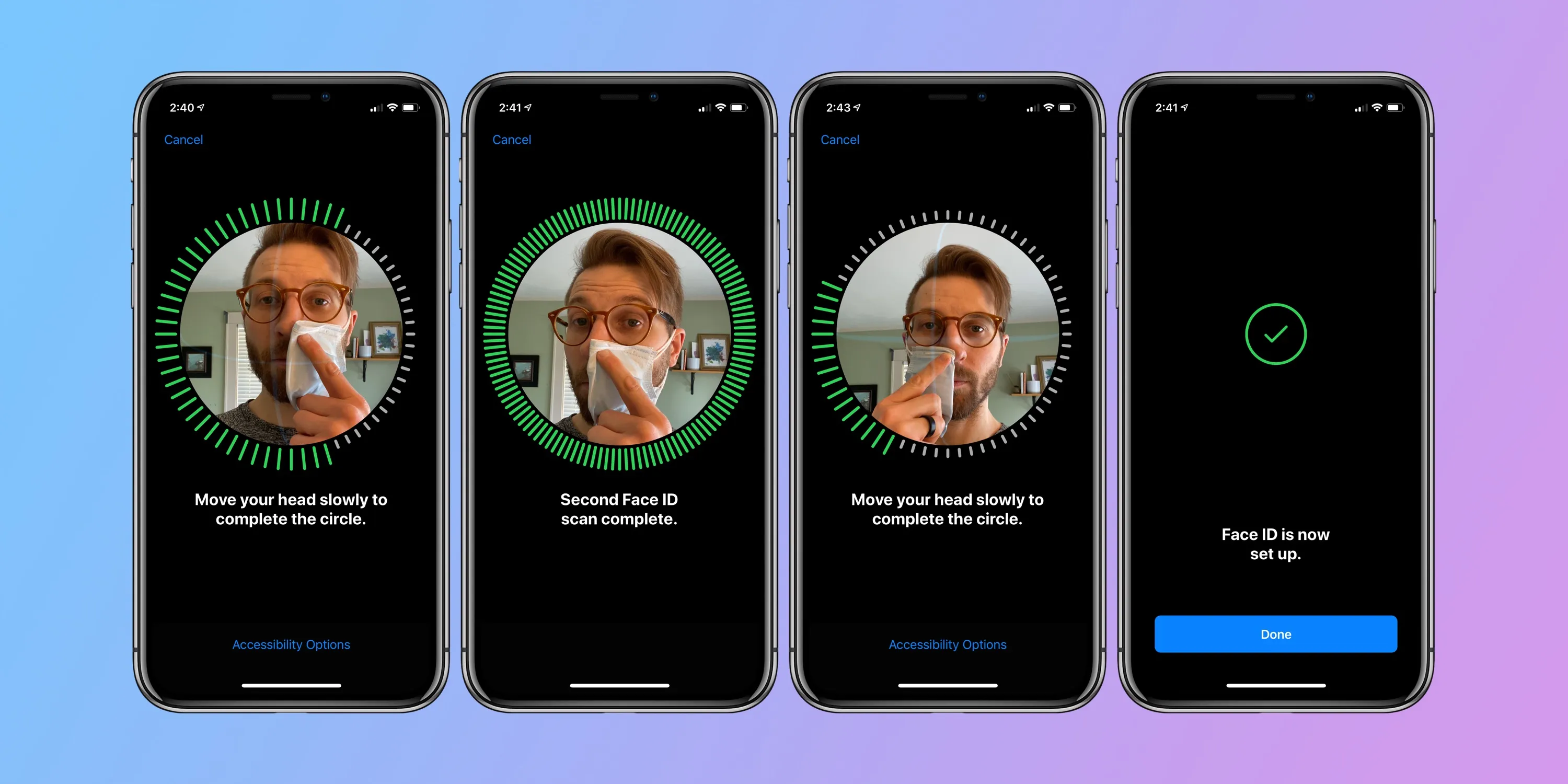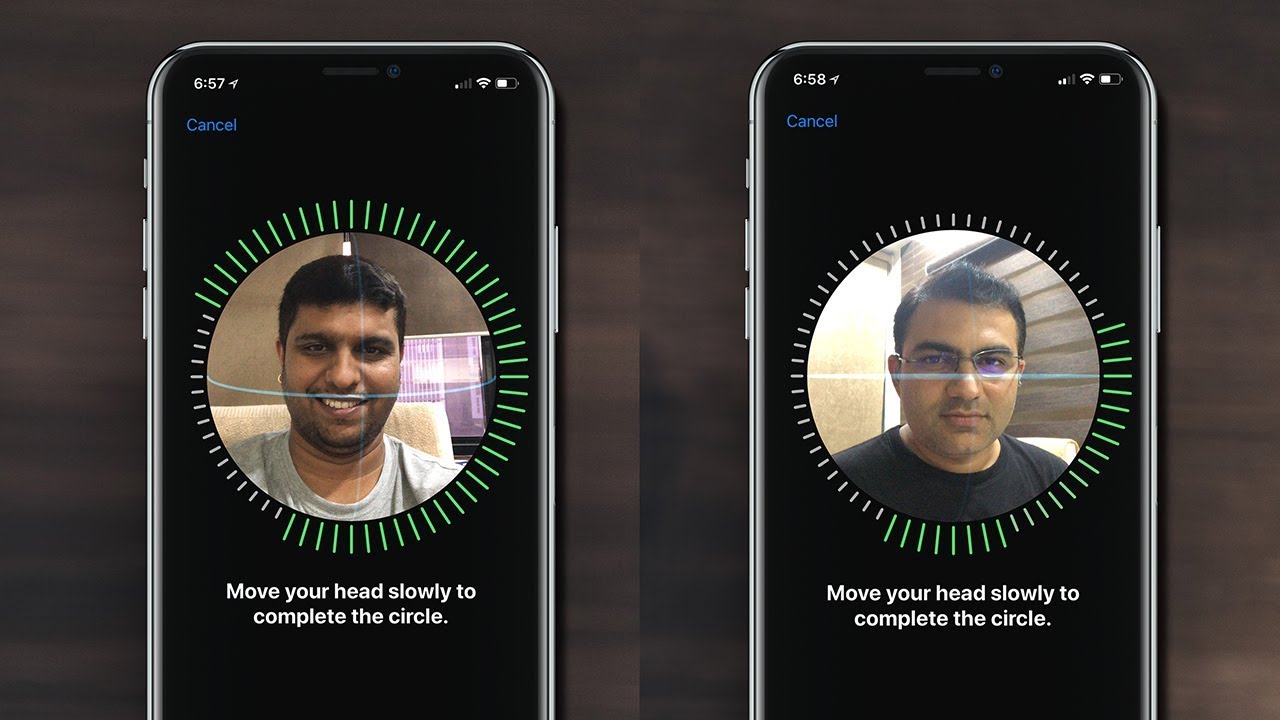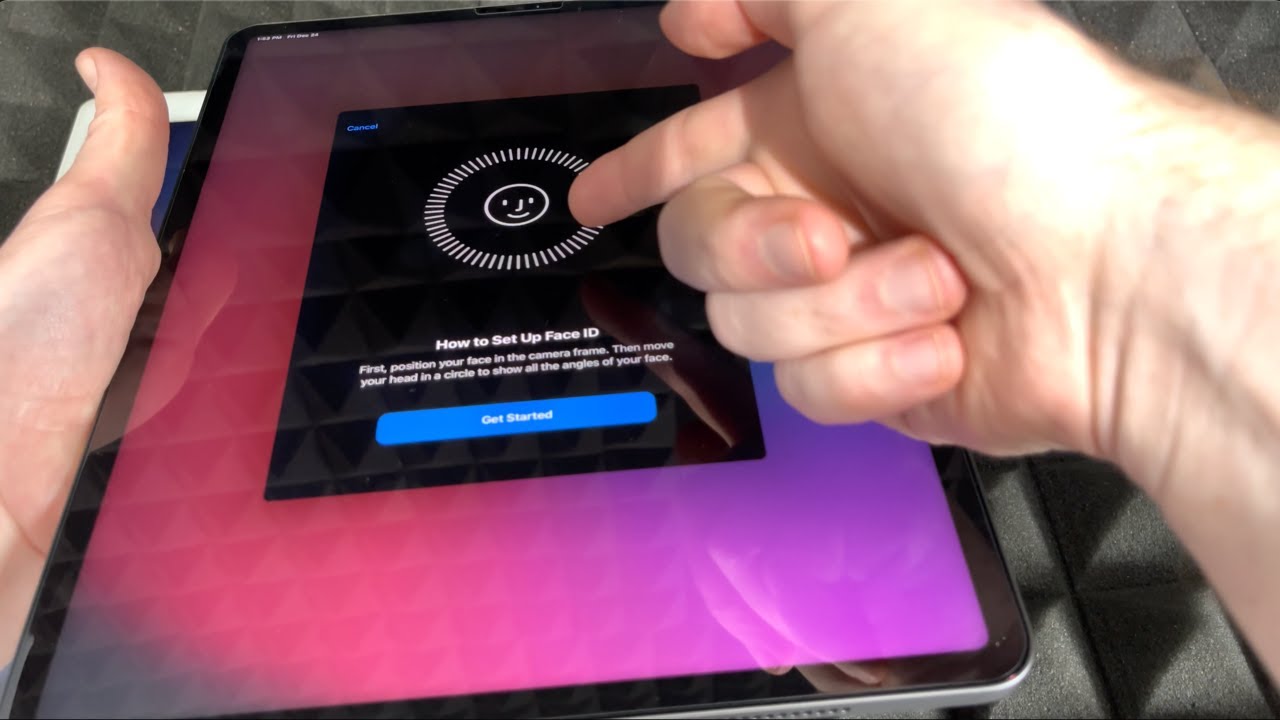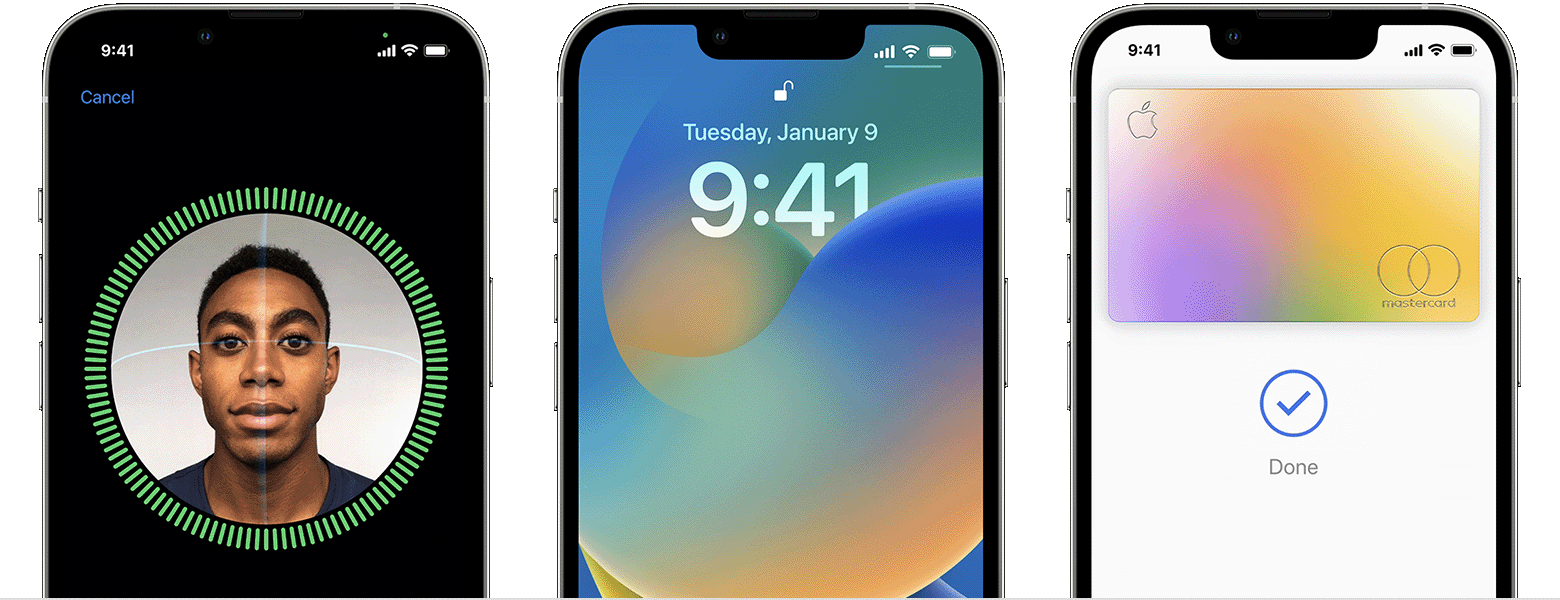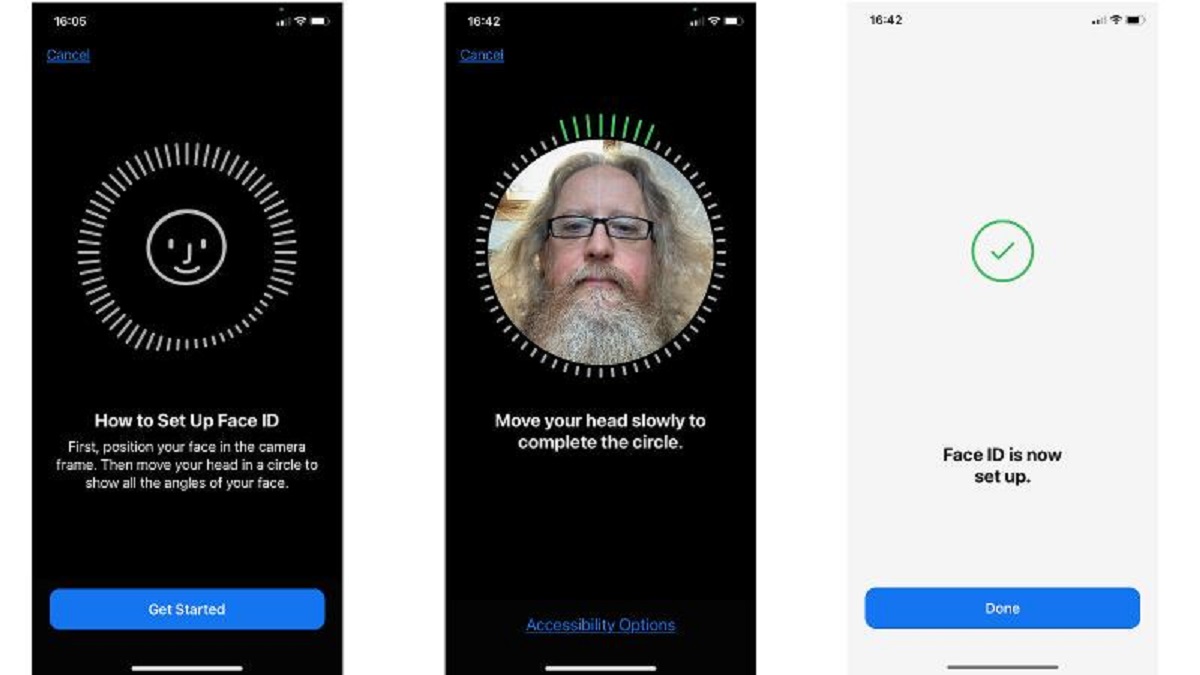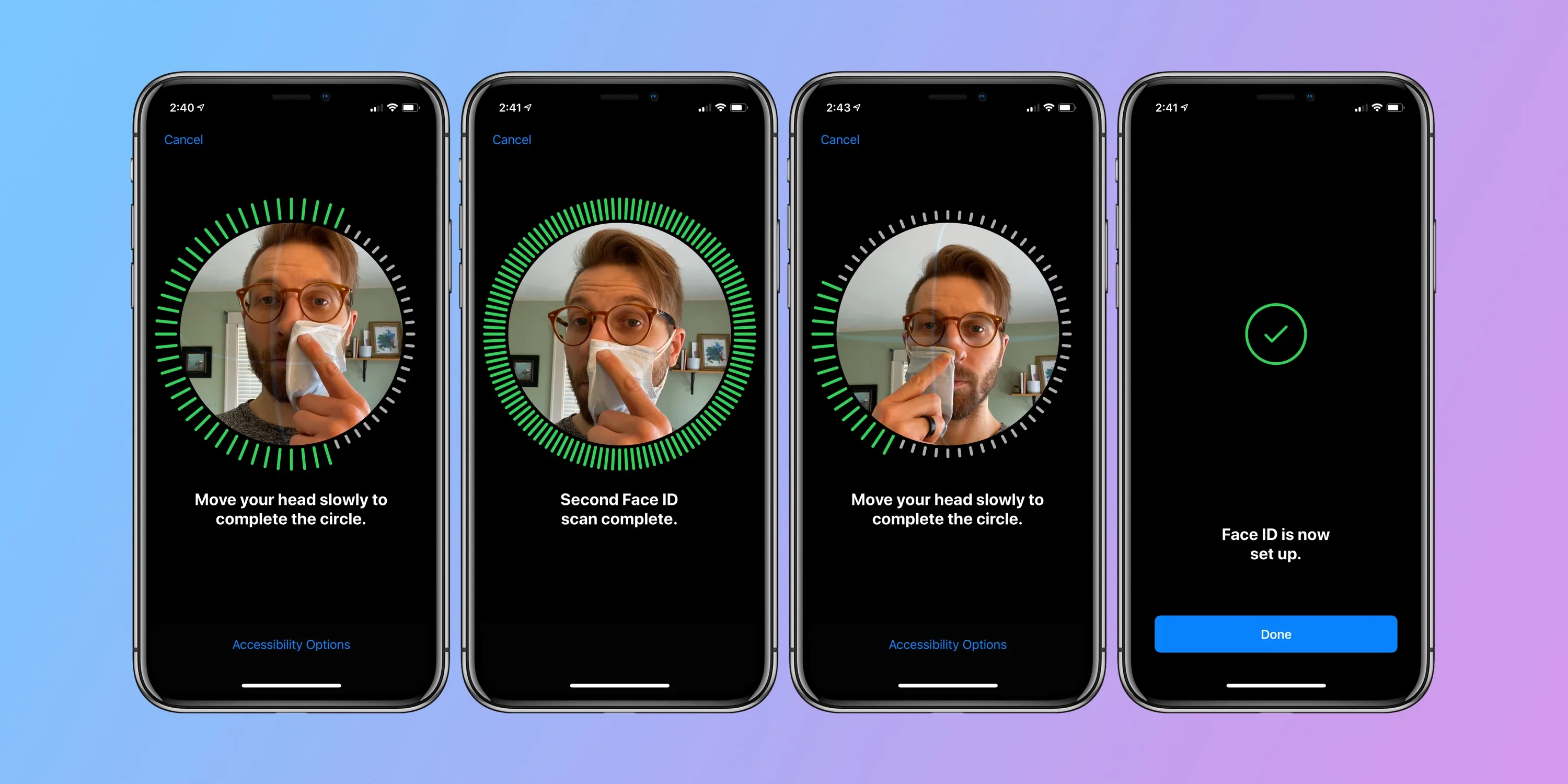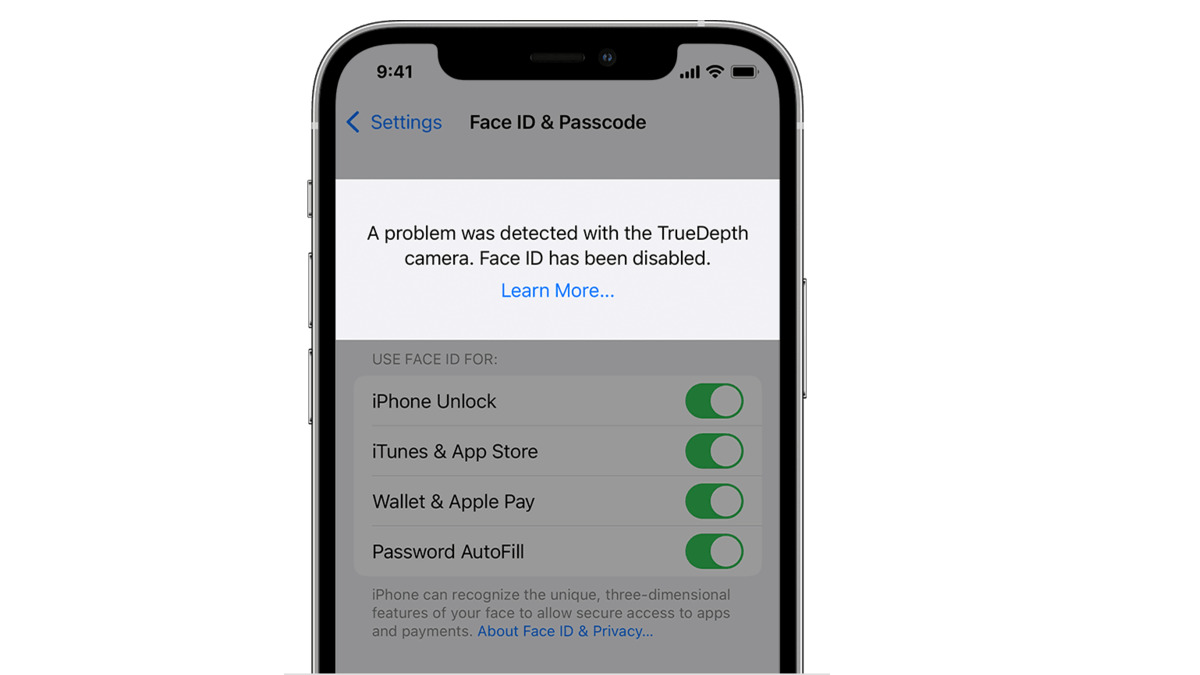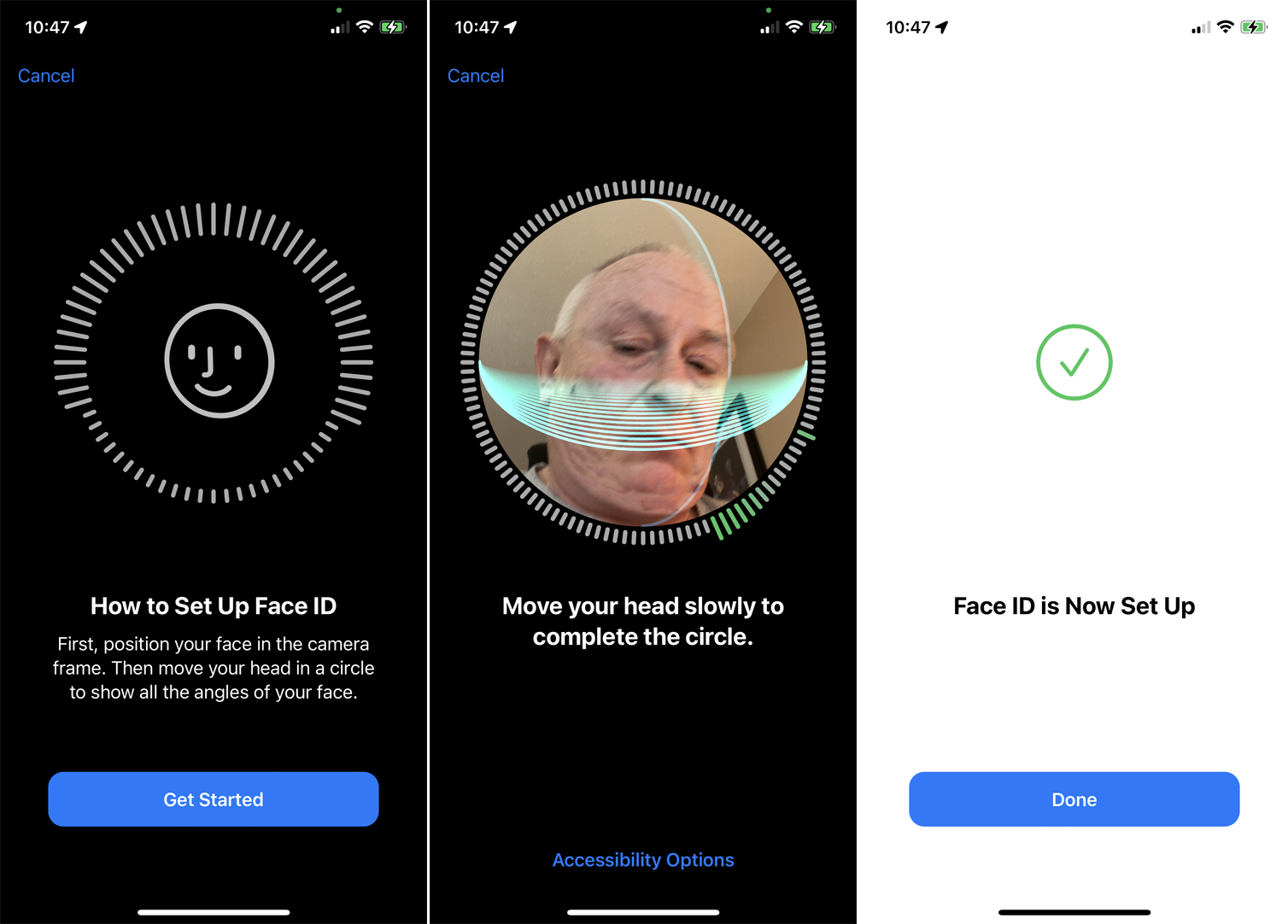Introduction
Welcome to the world of biometric authentication! Gone are the days of fumbling with passwords and PINs to unlock our devices. With the advent of face identification technology, our smartphones have become smarter and more secure than ever before. One popular form of this technology is Face ID, which has gained widespread popularity on devices like the iPhone.
Face ID is a cutting-edge facial recognition system that is designed to provide secure and convenient access to our devices. It uses advanced algorithms and sensors to analyze and map the unique features of our faces, making it nearly impossible for anyone else to impersonate us.
But what exactly is Alternate Appearance Face ID? In this article, we will delve into the details of this feature and explore its benefits and how to set it up. So, whether you want to use Face ID on different occasions or share your device with a trusted individual, Alternate Appearance Face ID has got you covered.
So, let’s get started and discover the fascinating world of Alternate Appearance Face ID!
What Is Face ID?
Face ID is a revolutionary biometric authentication technology developed by Apple for its iPhone and iPad devices. It replaces the traditional method of unlocking a device with a passcode or fingerprint scan by using facial recognition. This innovative feature allows users to securely unlock their devices, authenticate purchases, and access sensitive information with just a glance.
Unlike other facial recognition systems, Face ID utilizes a sophisticated TrueDepth camera system that not only captures an image of the user’s face but also analyzes it in real time. It works by projecting and capturing over 30,000 invisible infrared dots on the user’s face, creating a detailed 3D map known as a facial depth map. This depth map, along with information about the user’s eyes, nose, and mouth, is then encrypted and stored securely on the device’s secure enclave.
When the user tries to unlock their device, Face ID compares the current facial map with the saved one to determine if there is a match. Advanced machine learning algorithms continuously adapt to the user’s facial changes over time, such as growing a beard, wearing glasses, or using different hairstyles. This ensures that Face ID remains accurate and reliable, even as the user’s appearance subtly changes.
Face ID not only provides secure authentication but also offers additional features, such as Attention Aware, which ensures that the user is looking directly at the device for it to unlock. It also includes anti-spoofing mechanisms to prevent unauthorized access through photographs or masks.
Overall, Face ID represents a significant step forward in biometric authentication, providing users with a highly secure and convenient way to unlock their devices and protect their sensitive information. Whether it’s accessing banking apps, making contactless payments, or simply unlocking the device without the hassle of a passcode, Face ID offers a seamless and secure user experience.
How Does Face ID Work?
Face ID relies on a combination of specialized hardware and advanced software algorithms to accurately recognize and authenticate a user’s face. Here’s a closer look at how this cutting-edge technology works:
- TrueDepth Camera System: At the heart of Face ID is the TrueDepth camera system, located in the notch at the top of the iPhone or iPad. This system consists of various components, including an infrared camera, flood illuminator, dot projector, and proximity sensor.
- Face Mapping: When you set up Face ID, the dot projector projects a grid of infrared dots onto your face. These dots are then used to create a detailed depth map of your facial features, including the shape of your face and the position of your eyes, nose, and mouth.
- Infrared Imaging: The infrared camera captures the reflected dots from your face, creating a precise infrared image. This image, along with the depth map, is sent to the device’s A12 Bionic chip for processing.
- Secure Enclave: The A12 Bionic chip houses the secure enclave, a dedicated area responsible for storing all Face ID data. This data is encrypted and protected, ensuring that it remains secure and inaccessible to anyone else.
- Matching Process: When you attempt to unlock your device, Face ID compares the infrared image and depth map captured in real-time with the stored data in the secure enclave. Advanced neural networks analyze the distinctive facial features to determine if there is a match.
- Attention Aware: Face ID incorporates attention awareness, meaning that it checks to see if you are looking directly at the device. This prevents unauthorized access by preventing the device from unlocking if your eyes are closed or looking away.
The entire process of capturing and matching your face is lightning fast, taking only milliseconds to complete. Face ID adapts to changes in your appearance over time, allowing you to use the technology even as you grow a beard, wear glasses, or make subtle facial changes.
It’s important to note that your face data is stored locally on your device and is not accessible to Apple or any third-party apps. This ensures that your privacy and security are maintained, further enhancing the trustworthiness of Face ID.
Overall, the integration of advanced hardware and intelligent software algorithms allows Face ID to deliver a seamless user experience while ensuring robust security and accuracy.
What Is Alternate Appearance Face ID?
Alternate Appearance Face ID is a feature within the Face ID technology that allows users to set up an additional facial appearance to unlock their devices. It provides flexibility for users who may have different looks at different times, such as wearing makeup, glasses, or a hat. With this feature, you can easily switch between your primary appearance and an alternate appearance without compromising the security and convenience of Face ID.
The primary purpose of Alternate Appearance Face ID is to expand the usability of Face ID in various situations. For example, if you wear glasses regularly but decide to switch to contact lenses, you can set up your face with and without glasses as separate appearances. Additionally, you can use Alternate Appearance Face ID to grant trusted individuals access to your device without having to share your passcode or fingerprint.
When you set up the alternate appearance, the Face ID system captures and processes the facial data, just like it does for your primary appearance. It creates a unique facial depth map and infrared image for the alternate appearance, storing it securely in the device’s secure enclave. This ensures that your alternate appearance is as secure as your primary appearance.
It’s important to note that Alternate Appearance Face ID works in conjunction with the traditional Face ID setup. You can switch between the primary and alternate appearance by simply selecting the one you want to use when unlocking your device. The system automatically adapts to the appearance you choose, making the unlocking process seamless and secure.
Alternate Appearance Face ID offers a great deal of convenience for users who want to personalize their facial recognition experience. Whether it’s changing your appearance due to personal preferences or accommodating different scenarios, this feature ensures that you can always access your device easily without compromising security.
By incorporating Alternate Appearance Face ID, Apple continues to enhance the user experience of Face ID, catering to the diverse needs of its users. It’s yet another testament to the powerful capabilities and versatility of this advanced biometric authentication technology.
Benefits of Alternate Appearance Face ID
Alternate Appearance Face ID offers several benefits that enhance the usability and convenience of the Face ID technology. Let’s explore some of the key advantages:
- Personalization: Alternate Appearance Face ID allows you to personalize your facial recognition experience. You can add an alternate appearance to accommodate different looks, such as wearing glasses, hats, or makeup. This customization ensures that Face ID works reliably in various situations, adapting to your unique appearance.
- Flexibility: The feature provides flexibility by enabling you to easily switch between your primary and alternate appearance. This is particularly useful if you undergo temporary changes in your appearance, such as getting a new hairstyle or trying out different accessories. You can effortlessly toggle between appearances without compromising the security or accuracy of Face ID.
- Sharing Access: Another significant advantage of Alternate Appearance Face ID is that it allows you to grant trusted individuals access to your device. By setting up an alternate appearance for someone else, such as a family member or close friend, you can conveniently share your device without having to disclose your passcode or fingerprints. This feature is especially convenient for situations where you may need to lend your device to someone temporarily.
- Enhanced Security: Even though Alternate Appearance Face ID allows you to add flexibility and convenience, it maintains the same level of security as the primary appearance. The technology ensures that every appearance has a unique facial depth map and infrared image, securely stored in the device’s secure enclave. This means that both your primary and alternate appearances are equally protected, reducing the chances of unauthorized access.
- Seamless Experience: Adding an alternate appearance to Face ID does not complicate or slow down the unlocking process. Whether you choose your primary appearance or alternate appearance, the transition between the two is seamless. Face ID automatically adapts to the appearance you select, ensuring a smooth and effortless user experience each time you unlock your device.
Overall, Alternate Appearance Face ID provides users with added flexibility, personalization, and convenience while maintaining the high level of security that Face ID is known for. This feature caters to the diverse needs and preferences of users, ensuring that Face ID remains a versatile and user-friendly authentication method.
How to Set Up Alternate Appearance Face ID?
Setting up Alternate Appearance Face ID is a straightforward process that can be done directly from the Face ID settings on your iPhone or iPad. Follow the steps below to add an alternate appearance:
- Open the Settings app on your device and navigate to the “Face ID & Passcode” section.
- Enter your device passcode to access the Face ID settings.
- Tap on “Set Up an Alternative Appearance.”
- Follow the on-screen instructions to position your face within the camera frame. Make sure your face is well-illuminated and clearly visible.
- Move your head in a circular motion to allow the TrueDepth camera to capture different angles of your face. This helps the system create a comprehensive depth map of your alternate appearance.
- Once the scanning process is complete, tap on “Continue” to finalize the setup.
By following these simple steps, you will have successfully added an alternate appearance to your Face ID. Keep in mind that your primary appearance is still set as the default, and you can switch between the two whenever needed.
It’s worth noting that Apple recommends using the primary appearance for most unlocking scenarios and reserving the alternate appearance for specific situations or when sharing access to the device. This ensures optimal accuracy and security.
If, at any point, you want to remove the alternate appearance, you can do so by going to the “Face ID & Passcode” settings and selecting “Reset Face ID.” This will remove both the primary and alternate appearances, allowing you to set up Face ID from scratch.
Remember that setting up an alternate appearance may require some trial and error to achieve the desired recognition accuracy. If you have any difficulties during the setup process or experience issues with Face ID recognition, you can always refer to Apple’s support documentation or reach out to their customer support for further assistance.
Tips for Using Alternate Appearance Face ID
Once you have set up an alternate appearance with Face ID, here are some tips to help you make the most of this feature:
- Ensure Sufficient Lighting: When using Face ID with your alternate appearance, make sure you are in a well-lit environment. Sufficient lighting will help the TrueDepth camera capture accurate facial details and improve the recognition process.
- Create Distinctive Appearances: To enhance the accuracy of Face ID, try to create distinctive appearances for your primary and alternate appearance. This can be done by altering factors such as facial expressions, hairstyle, or the presence of accessories.
- Regularly Update Face ID: It is recommended to periodically update your Face ID settings, including your alternate appearance. Over time, our appearances may change due to factors like aging or style choices. Updating Face ID ensures that it continues to recognize your face accurately.
- Experiment with Different Accessories: If you regularly wear glasses, hats, or other accessories, consider adding these to your alternate appearance. This will enable Face ID to recognize you seamlessly, regardless of whether you are wearing the accessories or not.
- Practice Proper Alignment: When unlocking your device with an alternate appearance, ensure that your face is properly aligned with the front-facing camera. Positioning your face within the camera frame will optimize the accuracy of Face ID recognition.
- Keep Your Appearance Consistent: Once you have chosen your alternate appearance, try to keep it consistent. Avoid making frequent changes that can affect Face ID’s ability to recognize your face accurately. Consistency helps maintain the reliability of the facial recognition feature.
- Re-scan if Needed: If you find that Face ID is consistently having difficulty recognizing your alternate appearance, consider re-scanning your face. This can help recalibrate the system and improve its ability to identify your face.
Remember, Face ID continuously adapts and learns from your facial changes, so it is important to provide it with accurate and up-to-date information. By following these tips, you can maximize the effectiveness of Alternate Appearance Face ID and enjoy a seamless and secure unlocking experience with your iOS device.
Conclusion
Alternate Appearance Face ID is a valuable addition to the Face ID technology, offering users the flexibility, convenience, and personalization they desire. By allowing the setup of an additional facial appearance, users can easily switch between their primary and alternate appearances, accommodating different looks and sharing device access with trusted individuals.
The benefits of Alternate Appearance Face ID extend beyond customization. The feature maintains the same high level of security as the primary appearance, ensuring that users’ personal information remains protected. Moreover, the seamless integration of Alternate Appearance Face ID within the Face ID system enhances the overall user experience, making the unlocking process effortless and reliable.
Setting up an alternate appearance is a simple process, accessible through the Face ID settings on Apple devices. Users are encouraged to ensure sufficient lighting, create distinctive appearances, and periodically update their Face ID settings to optimize recognition accuracy. By following these tips, users can make the most of Alternate Appearance Face ID and enjoy a secure and personalized unlocking experience.
Alternate Appearance Face ID exemplifies Apple’s commitment to providing cutting-edge biometric authentication technology that meets the diverse needs of its users. Whether it’s adapting to various appearances or sharing device access, this feature showcases the versatility and innovation of Face ID.
With the continued advancements in facial recognition technology, it is exciting to see how Alternate Appearance Face ID and similar features will evolve further, enhancing the security and convenience of our devices. As we look to the future, biometric authentication continues to redefine the way we interact with technology, making our lives easier and more secure.







